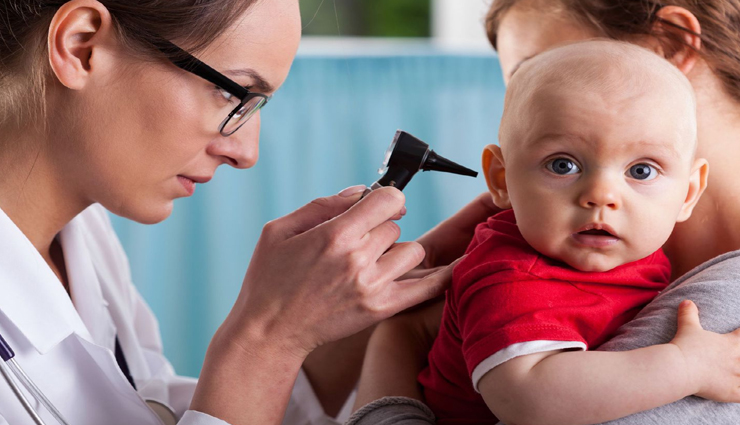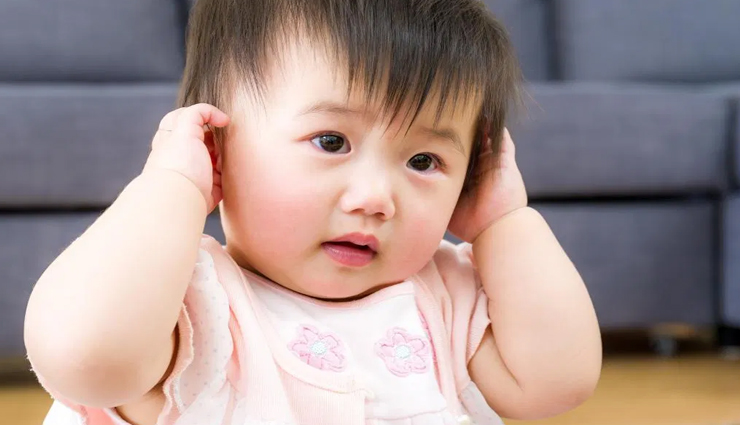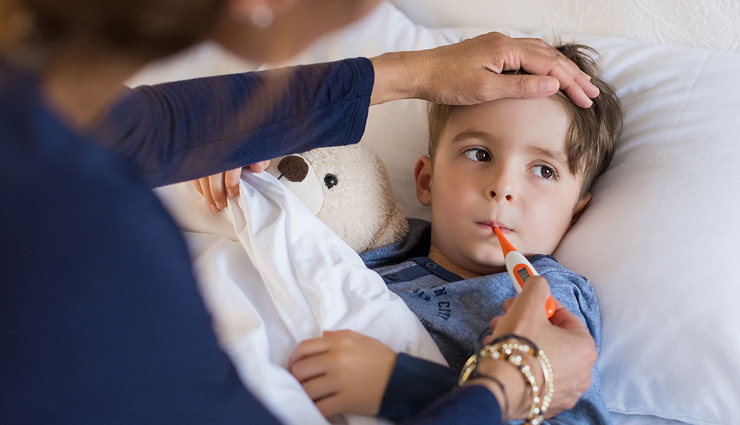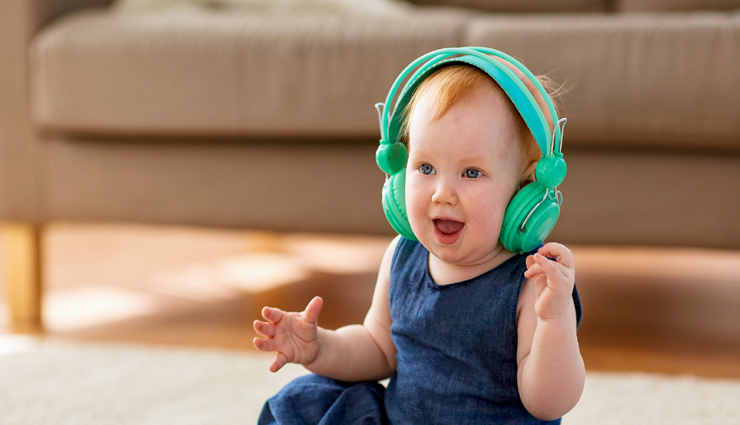- Home›
- Healthy Living›
- Signs And Symptoms To Look For Ear Infection In Babies
Signs And Symptoms To Look For Ear Infection In Babies
By: Priyanka Maheshwari Fri, 25 Sept 2020 10:46:46

Did you know? Ear infections are far more common in infants than adults and are difficult to detect as the ears are still concealed. Ear infections quite often cause your baby to cry inconsolably and clingy. So how do you deal with the situation?
MomJunction helps you deal with it. We’ll explain the various reasons, symptoms, and treatments for ear infections in babies. We also familiarize you with the numerous precautions you must take to prevent an infection.
The human ear is segmented into three sections viz. outer, middle and inner. The middle ear is connected to the nasal cavity through a tube called the eustachian tube. The tube is narrow at the beginning but widens as it reaches the middle ear. It is for the most part closed but opens once in a while to equalize the air pressure in the middle ear and drain the fluids secreted by the middle ear. This exposes the middle ear to virus and bacteria from the sinonasal cavity, making the region the primary center of ear infections.
Your baby cannot talk. The only way he can communicate is through his cries. But his cry can mean many things, so how can you understand that he is crying due to ear infection? Recognize the symptoms:

* Fluid discharge from the ear
It is the paramount sign of an ear infection. If you notice a clear or yellowish-red fluid draining from your baby’s ears, then it definitely means something is wrong. A perforated eardrum could be leaking the accumulated and infected fluid from the baby’s middle ear. The yellowish nature of the fluid is due to the buildup of pus that is an aggregation of white blood cells that attack pathogens. It is thus a definite indicator of an infection. This is a late sign, and hopefully can be prevented by investigating earlier why your baby is so uncomfortable.
* Unpleasant smell from the baby’s ear
You may notice an unpleasant smell emanating from the baby’s ear even when he is clean. The smell is distinct from that of ear wax and lasts for days together. The smell usually derives from the pool of infected fluid that lies behind the eardrum.

* Tugging at ears while crying
The baby may tug at his ears especially during his chronic bursts of crying. It is a sign of discomfort in that part of the body. Your baby may tug or pinch severely when he is lying down or sleeping. Since young babies cannot talk, tugging at the ear is their way to communicate a feeling of discomfort.
* Fever
An ear infection can cause high fever for several days without any visible illness. This means the baby will not have a cold or any other infection, but his temperature will be more than 102 degrees F. According to Dr. Max M. April from the American Academy of Otolaryngology, a constant fever around 102 degrees F is one of the hallmarks of a baby’s ear infection.
Sometimes, your baby may not have a fever but may still have an ear infection. Dr. Jennifer Shu of American Academy of Pediatrics states that parents must also check for other symptoms of ear infection and not just rely on the fever.

* Delayed or lack of response towards sounds
An ear infection can be one of the several underlying reasons for a baby’s lack of response to sounds. When fluid builds up in the middle ear, it slows the passage of sound towards the inner ear. The infection makes the fluid thicker, thus impeding the movement of sound impulses from the outer ear to the inner ear. It means your baby will have trouble responding to sounds and voices.
* Reduced appetite
Eustachian tubes widen naturally while swallowing (6). During an ear infection, the walls of the tube swell thus making their widening quite painful. For this reason, the baby may want to avoid the feeds. He may get irritable when he is coaxed to feed and stop halfway. In some cases, the baby may make choking sounds or cough due to the pain caused by the infection.

* Loss of balance
If your baby is old enough to crawl or walk a few steps on his own, then he may lose his balance. His walk can be unstable. He might also crawl in a zig-zag pattern. This could mean that the fluid buildup in the middle ear is so much that it now puts pressure on labyrinth – the part of the inner ear also responsible for maintaining body balance. In a worst-case scenario, it could mean the infection has trickled down to the inner ear but this is not likely to happen until or unless every symptom of middle ear infection is neglected.
* General irritability
The baby may show signs of general irritability especially when he is being held or lying down. It means that the baby is feeling uncomfortable, which is an indicator of an ear infection.
Sometimes the symptoms of ear infection are misleading. They might actually be pointing at some other condition, while you are busy finding a cure for the ear infection.





